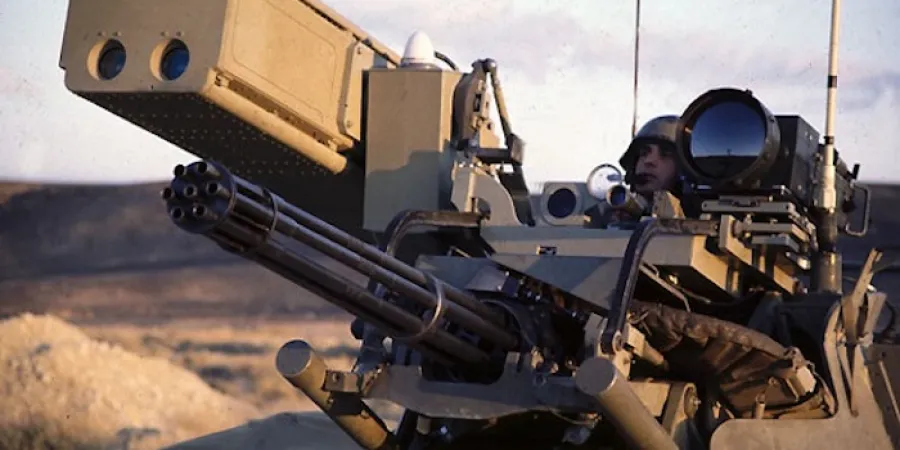Report: Israel Evaluates M61 Vulcan Cannon as Anti-Drone Measure
An IDF spokesman confirmed that this cannon is currently being tested along with other solutions, but it is not yet in operational use by the IDF
Eyal Boguslavsky
| 01/06/2024
Israel is examining the possibility of installing the M61 Vulcan cannon on top of armored personnel carriers deployed along the northern border with Lebanon as a counter-drone measure.
The IDF has placed drone-detection systems across the northern border to improve response time and interception accuracy. This, according to a report on Defense News, which mentions that the IDF’s Northern Command has also established a unit dedicated to targeting drones. Despite these measures, Hezbollah reportedly managed to send a drone into Israeli airspace in May to attack a military facility.
The M61 Vulcan is a six-barrel, electrically fired Gatling-style rotary cannon capable of firing 6,000 rounds per minute. American company General Dynamics has produced the M61 Vulcan, which has been used on U.S. military fixed-wing aircraft for decades. The Israel Air Force has used it since 1975, including a modified version known as the “Racquet”. The IDF stationed this weapon on top of the M113 armored personnel carrier until it was retired in 2006.
Israeli defense companies that currently provide counter-drone products include Rafael Advanced Defense Systems and Israel Aerospace Industries. Both companies declined to comment, as did the Israeli Defense Ministry.
However, an IDF spokesperson told Defense News that the military “does not have Vulcan cannons at the moment. It, along with other solutions, is being tested at this stage in trials in the defense industries as part of our process of building military strength. There are a variety of measures, some in operational trials, and others in the research and development phase, alongside adjustments in operational activity in the field.”
An IDF spokesman confirmed that this cannon is currently being tested along with other solutions, but it is not yet in operational use by the IDF
Israel is examining the possibility of installing the M61 Vulcan cannon on top of armored personnel carriers deployed along the northern border with Lebanon as a counter-drone measure.
The IDF has placed drone-detection systems across the northern border to improve response time and interception accuracy. This, according to a report on Defense News, which mentions that the IDF’s Northern Command has also established a unit dedicated to targeting drones. Despite these measures, Hezbollah reportedly managed to send a drone into Israeli airspace in May to attack a military facility.
The M61 Vulcan is a six-barrel, electrically fired Gatling-style rotary cannon capable of firing 6,000 rounds per minute. American company General Dynamics has produced the M61 Vulcan, which has been used on U.S. military fixed-wing aircraft for decades. The Israel Air Force has used it since 1975, including a modified version known as the “Racquet”. The IDF stationed this weapon on top of the M113 armored personnel carrier until it was retired in 2006.
Israeli defense companies that currently provide counter-drone products include Rafael Advanced Defense Systems and Israel Aerospace Industries. Both companies declined to comment, as did the Israeli Defense Ministry.
However, an IDF spokesperson told Defense News that the military “does not have Vulcan cannons at the moment. It, along with other solutions, is being tested at this stage in trials in the defense industries as part of our process of building military strength. There are a variety of measures, some in operational trials, and others in the research and development phase, alongside adjustments in operational activity in the field.”



